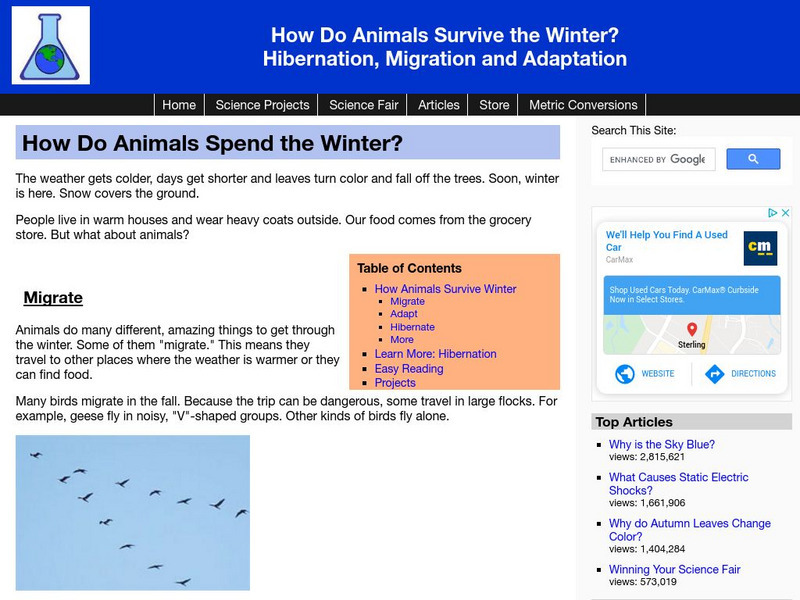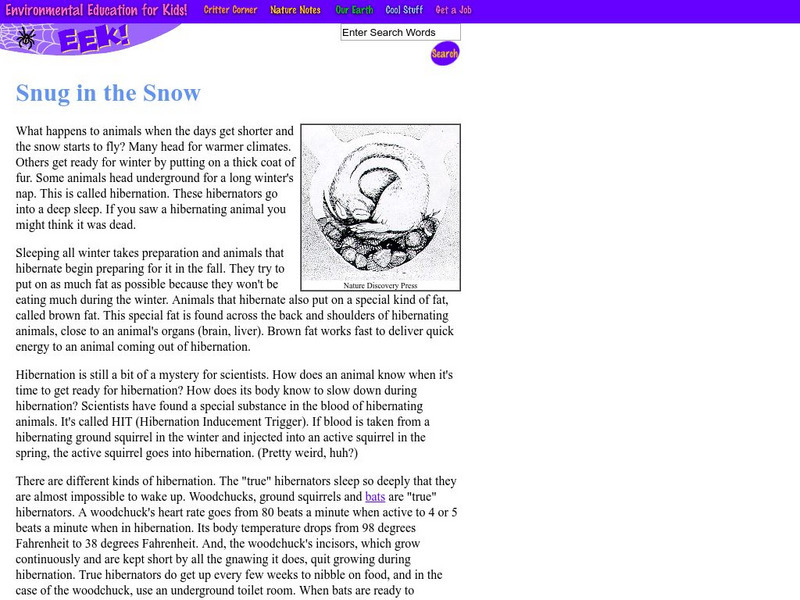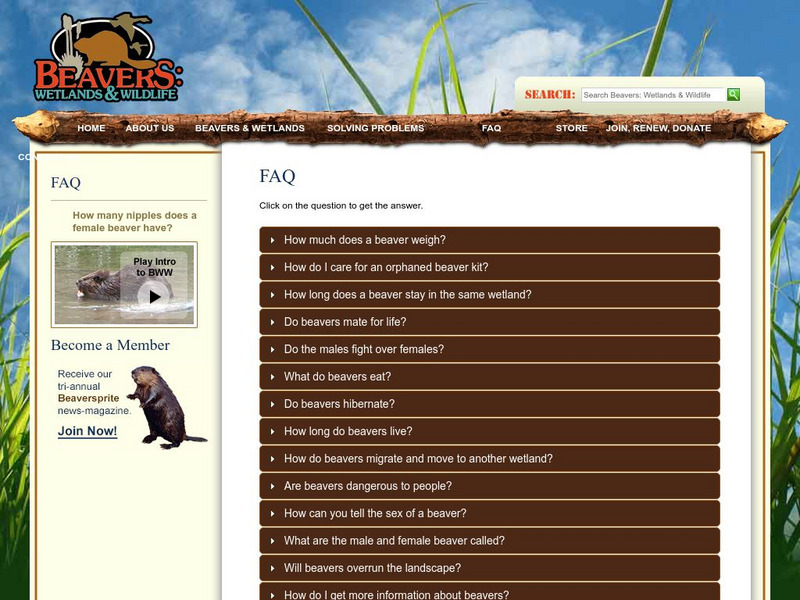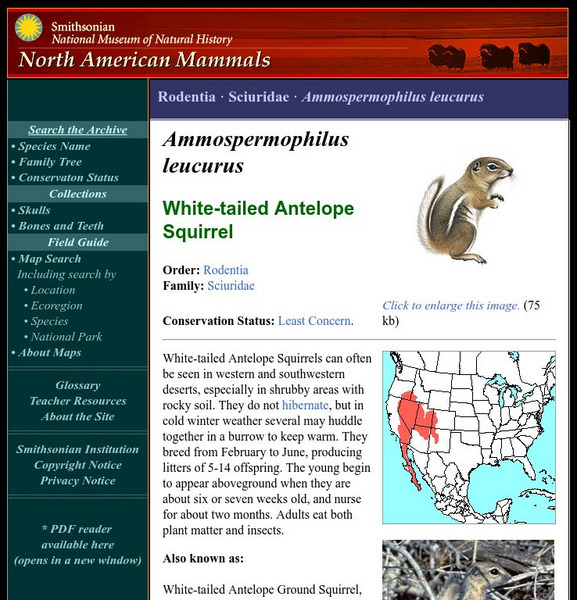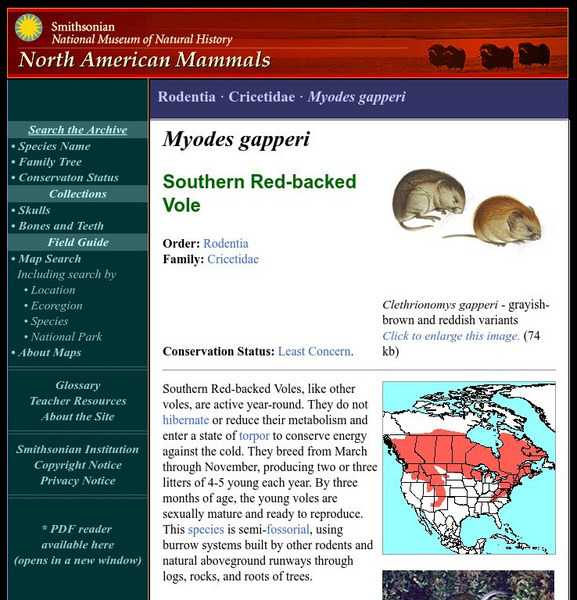Curated OER
Make Way for Wild Migrants
Learners discuss the threats facing migratory species and track the seasonal journeys of wildlife in real space and in cyberspace. Once they have gathered information from several sources, they create a portfolio to share with others...
Better Lesson
Better Lesson: Student, Student, What Do You See?
Most bears are getting ready to hibernate this time of year. NOT IN MY ROOM! These little brown bears will be on the hunt for shapes they see.
Science Made Simple
Science Made Simple: How Do Animals Spend the Winter?
Use this site to learn how animals use hibernation, adaptation, and migration to overcome the difficulties of winter.
Environmental Education for Kids
Eek!: Snug in the Snow
Understand hibernation and what animals do to prepare for it.
Khan Academy
Khan Academy: Timekeeping
Why do we need calendars and clocks? To survive in this complex society, you need to track what others are doing and when they're doing it. You also need to know what's happening in the natural world. This article discusses how/why...
Smithsonian Institution
National Museum of Natural History: American Mammals: American Black Bear
Most Black Bears hibernate for up to seven months, and do not eat, drink, urinate, or exercise the entire time. In the South, where plant food is available all year, not all bears hibernate, but pregnant females do. Learn more about the...
Other
Beavers: Frequently Asked Questions & Answers
Did you know that beavers are vegetarians that do not hibernate and are rarely dangerous to people? You will find more beaver facts in this informative question and answer site.
Smithsonian Institution
National Museum of Natural History: American Mammals: White Tailed Antelope Squirrel
White-tailed Antelope Squirrels can often be seen in western and southwestern deserts, especially in shrubby areas with rocky soil. They do not hibernate, but in cold winter weather, several may huddle together in a burrow to keep warm....
Smithsonian Institution
National Museum of Natural History: American Mammals: Southern Red Backed Vole
Southern Red-backed Voles, like other voles, are active year-round. They do not hibernate or reduce their metabolism and enter a state of torpor to conserve energy against the cold. Learn more about the Clethrionomys gapperi, more...




